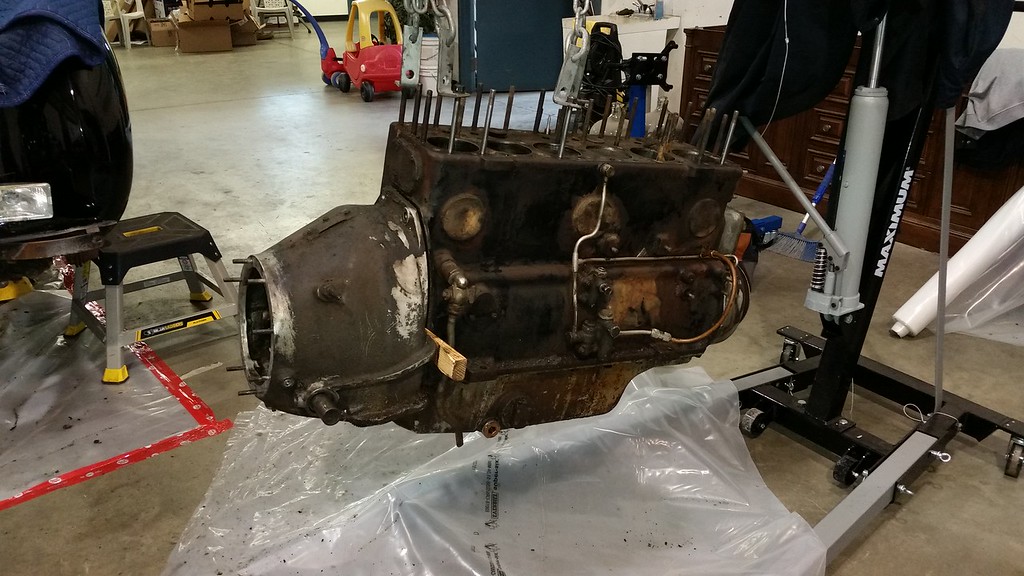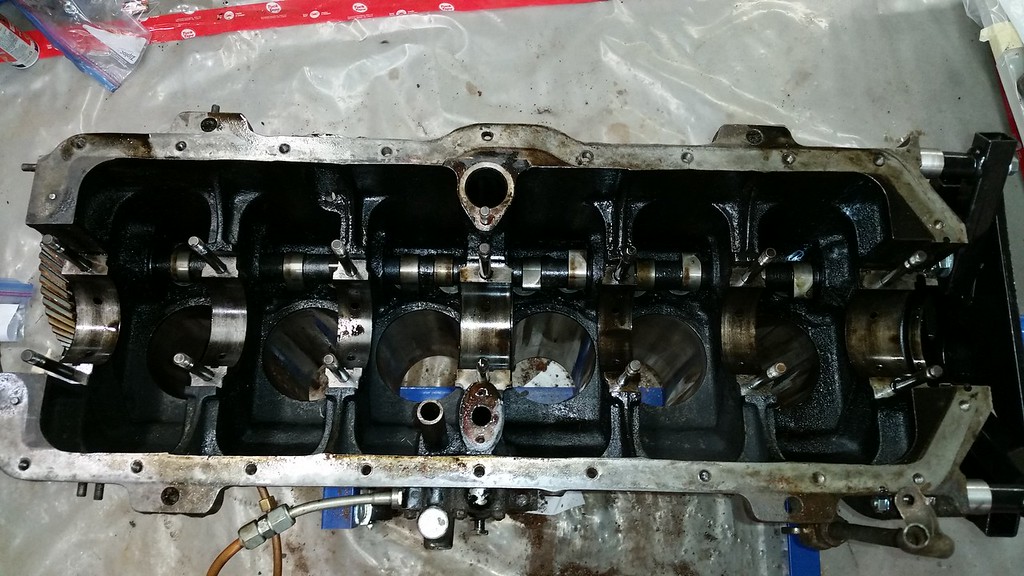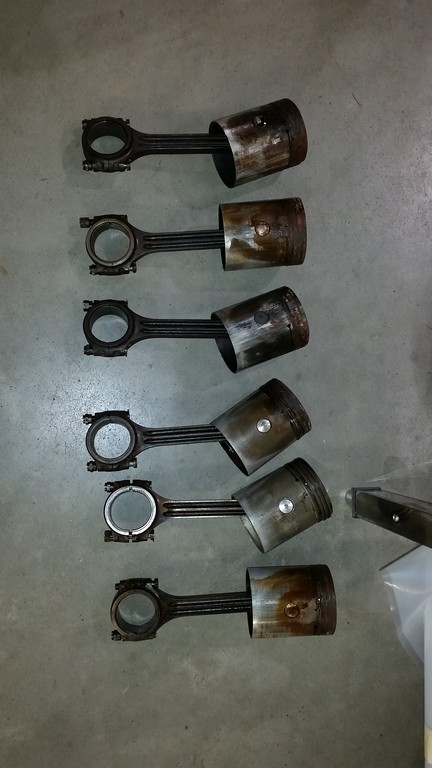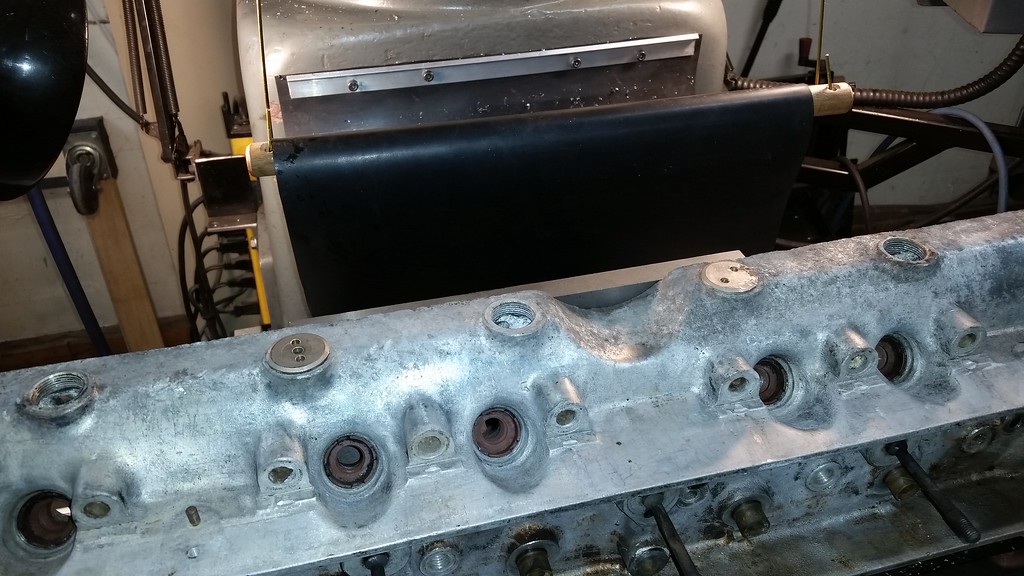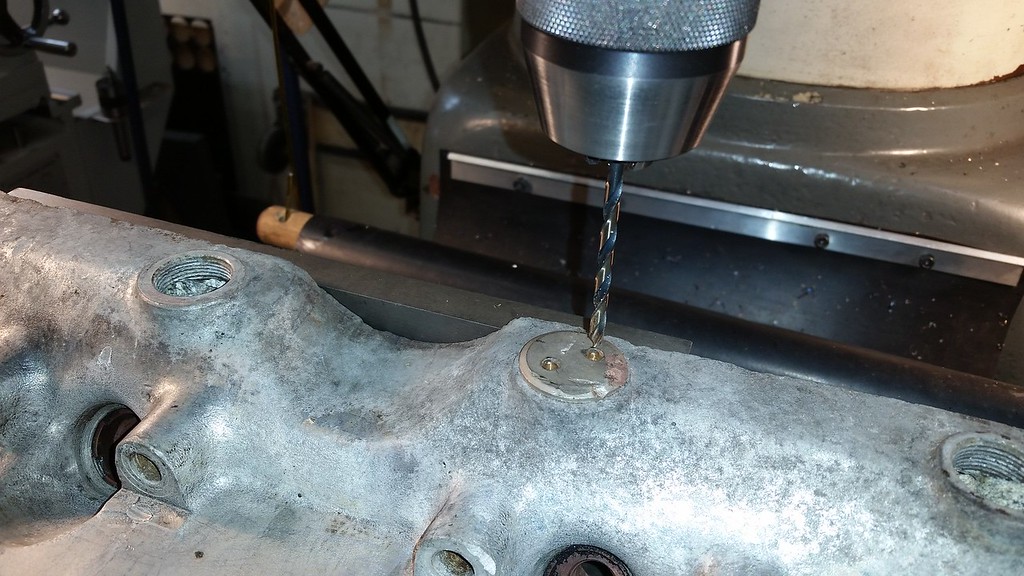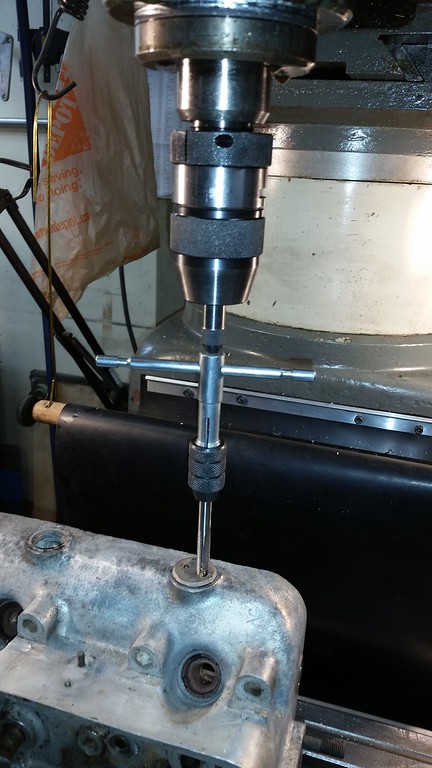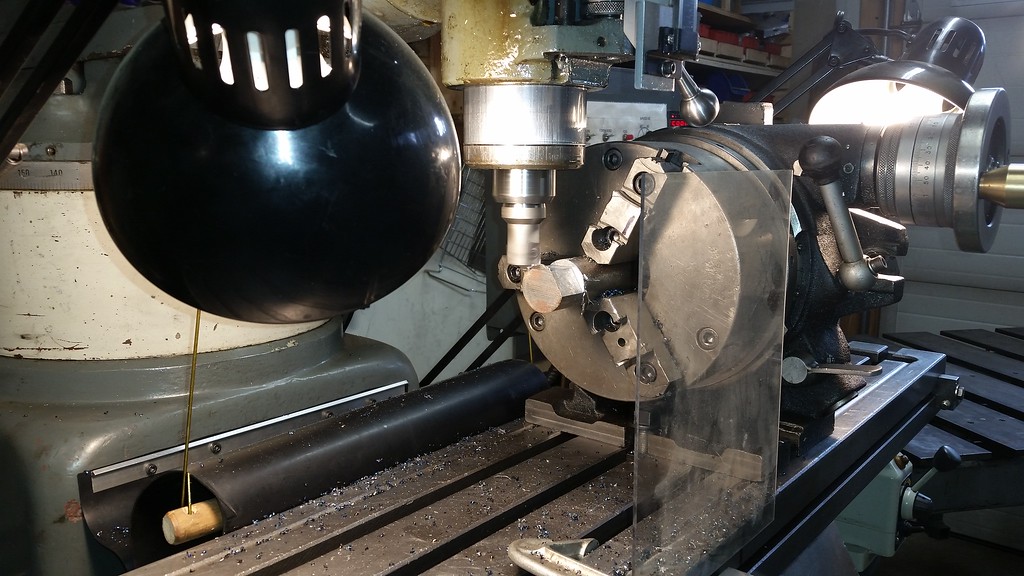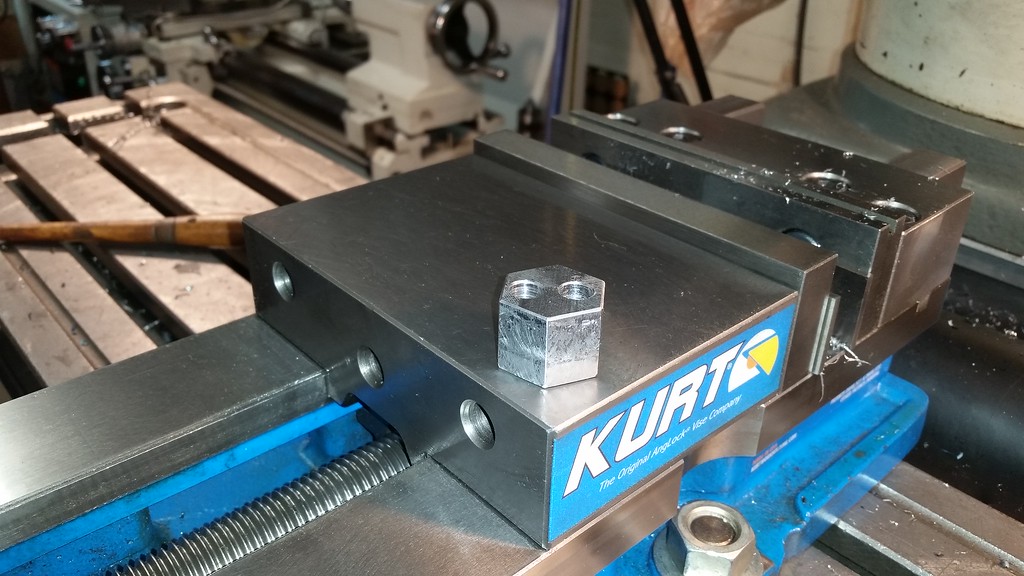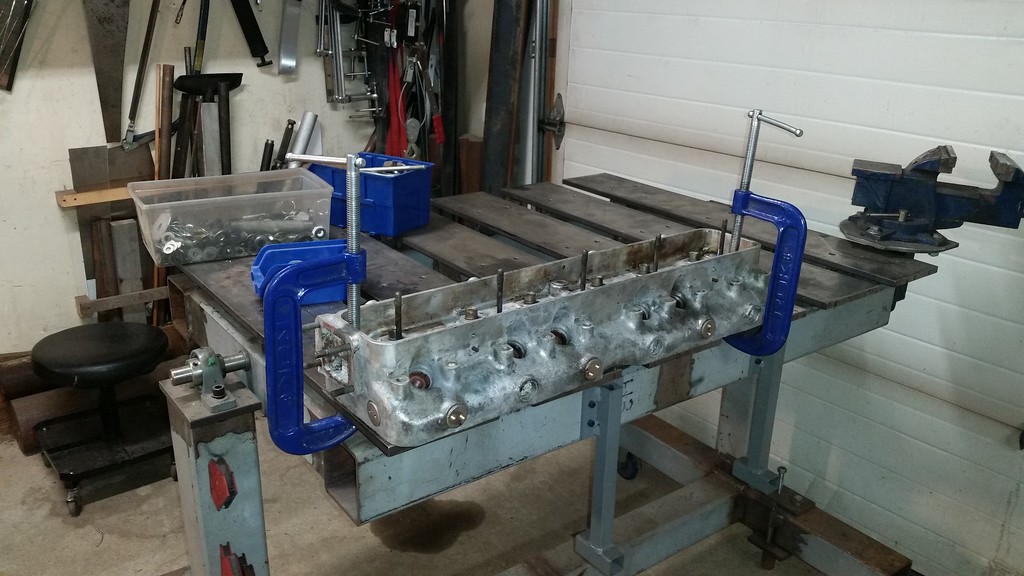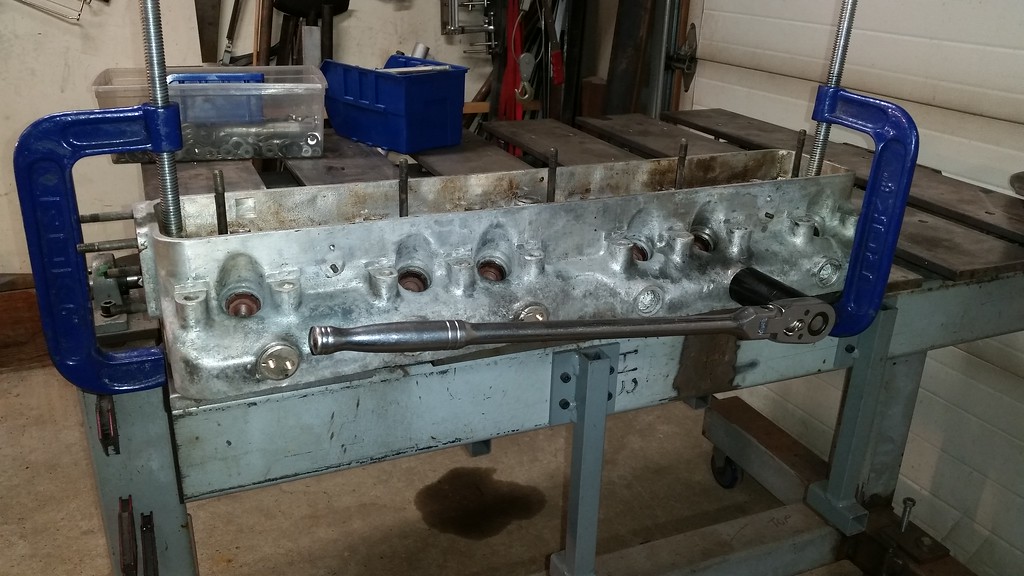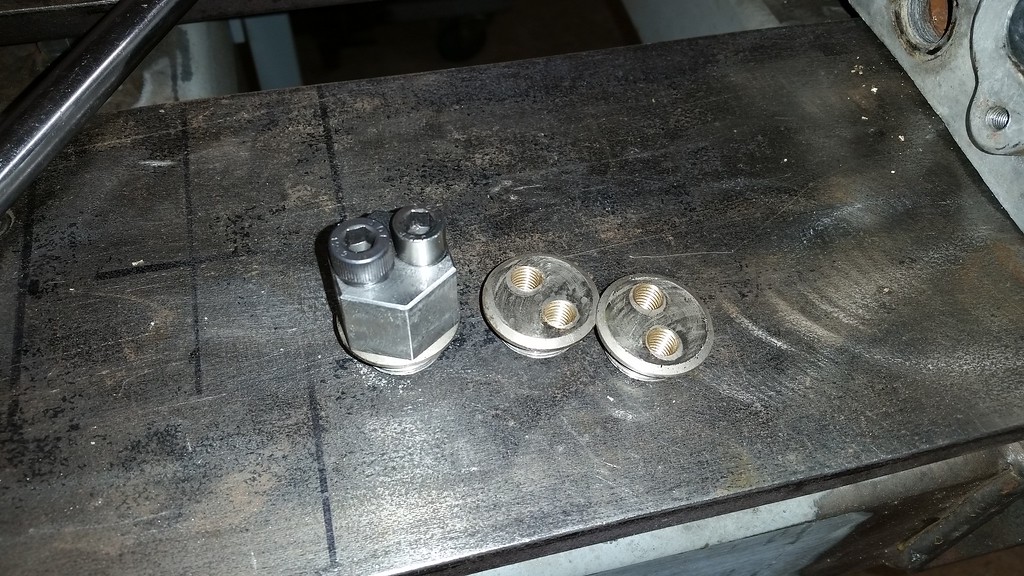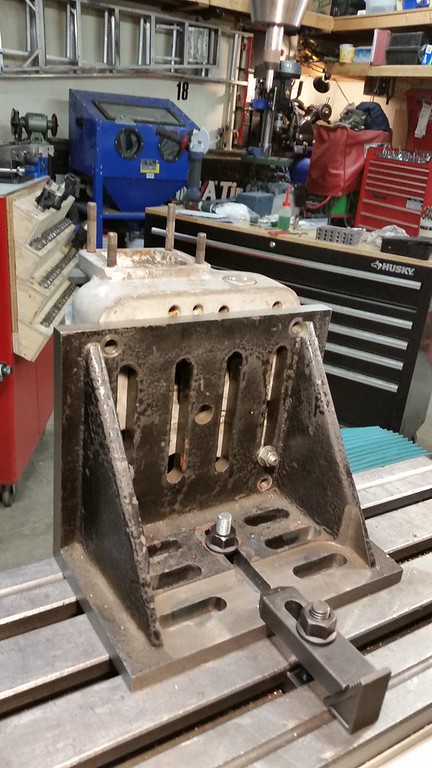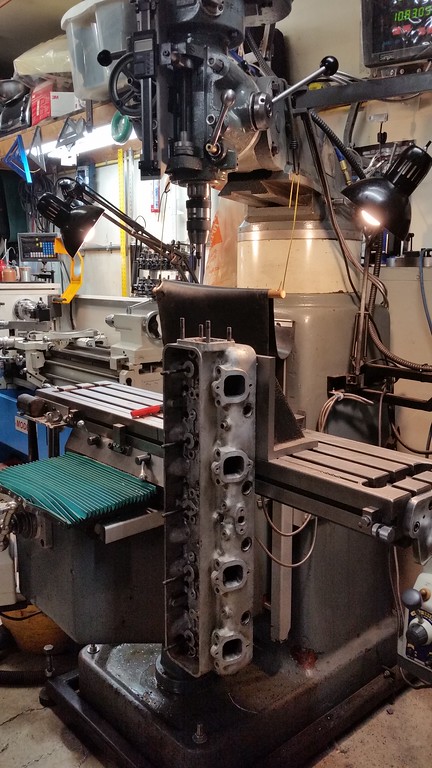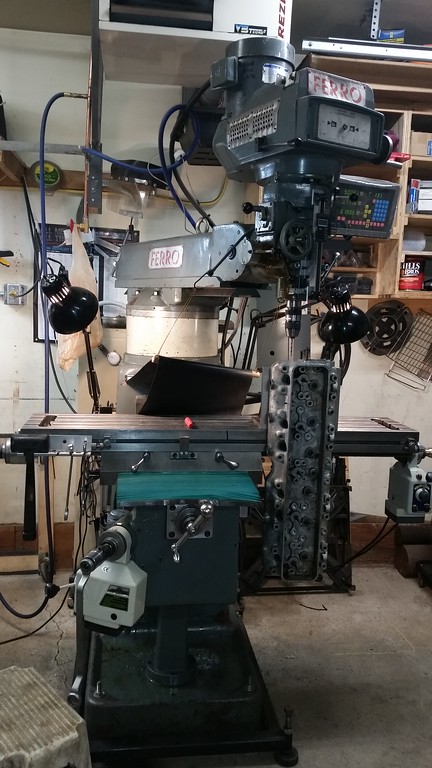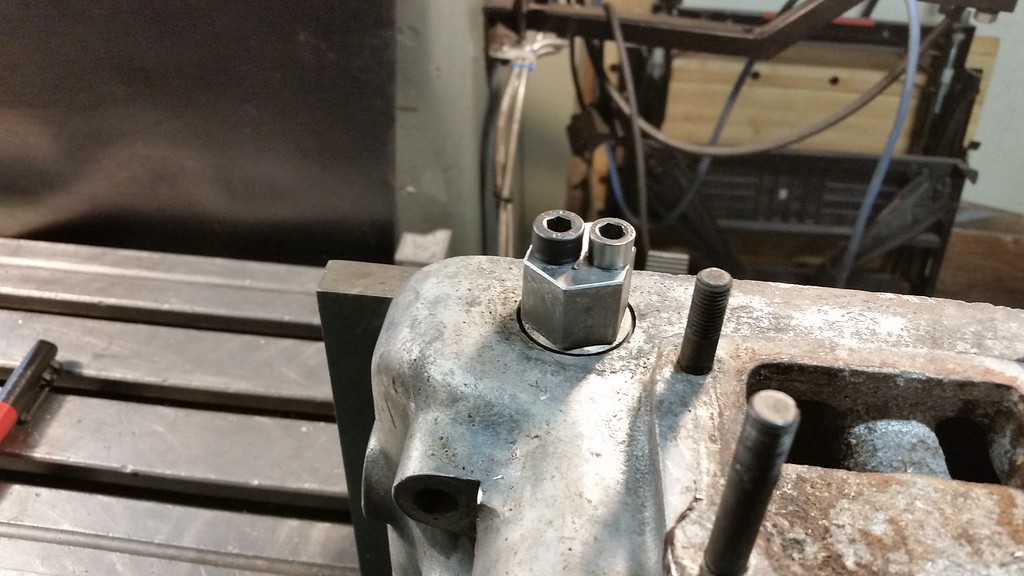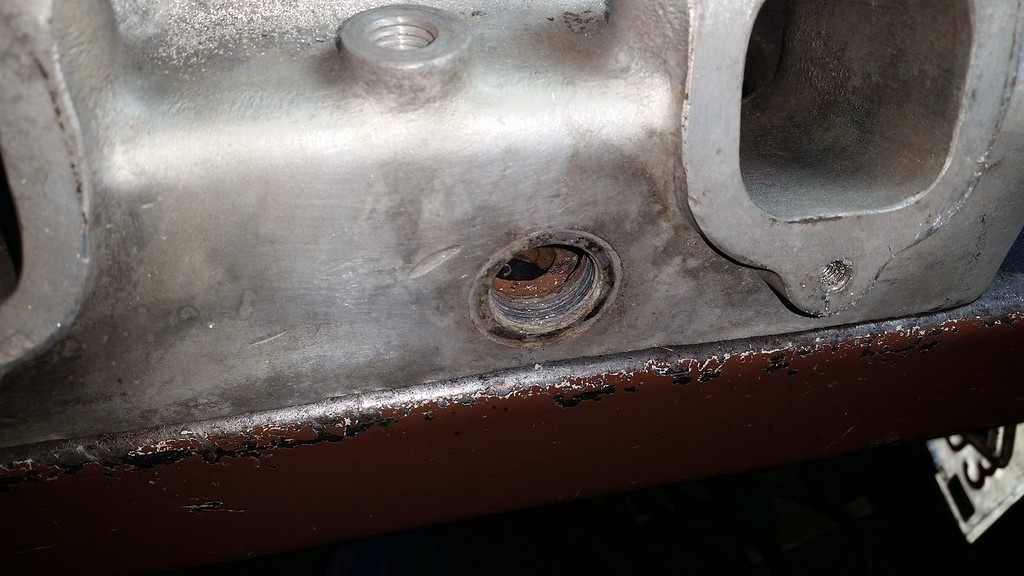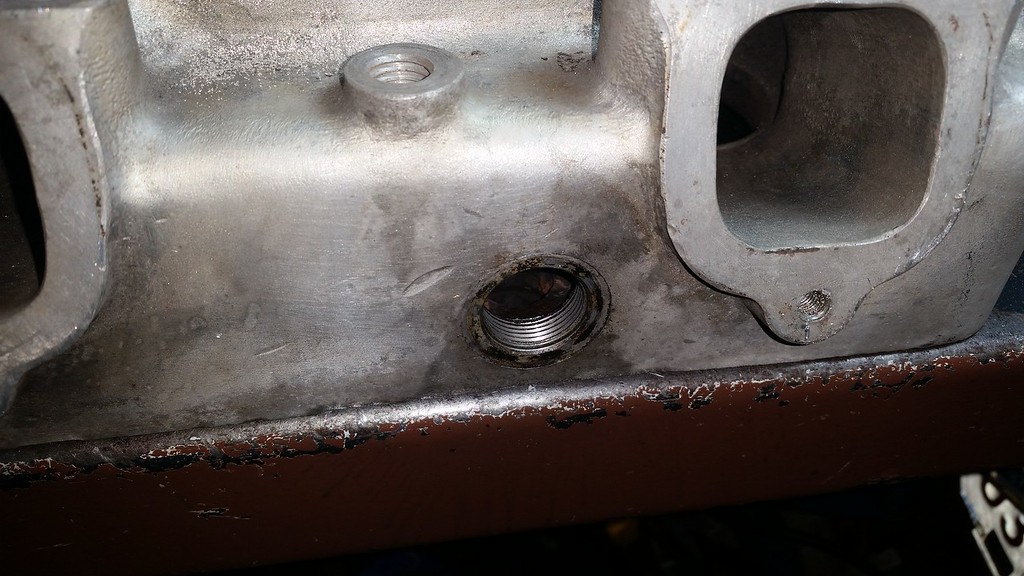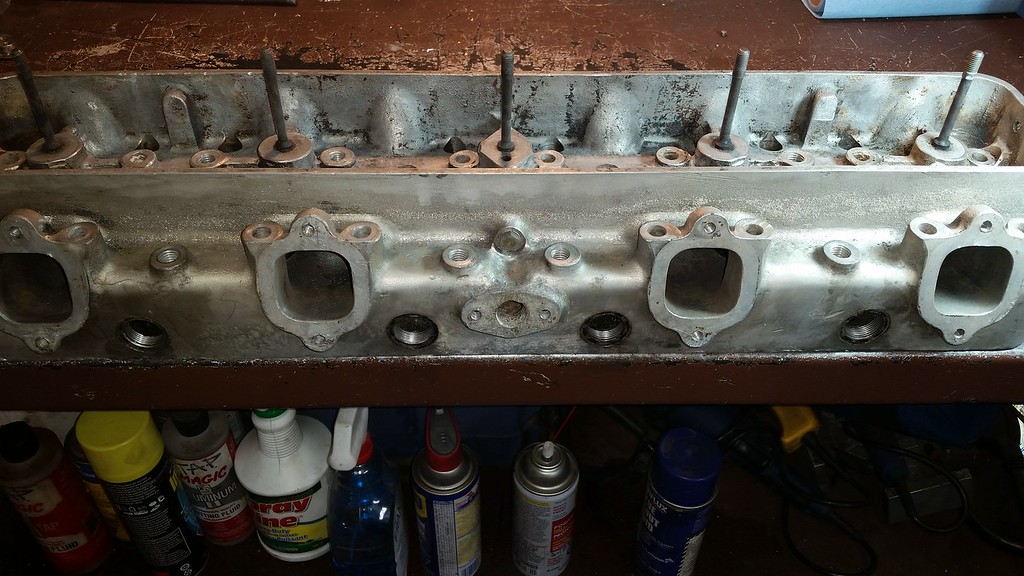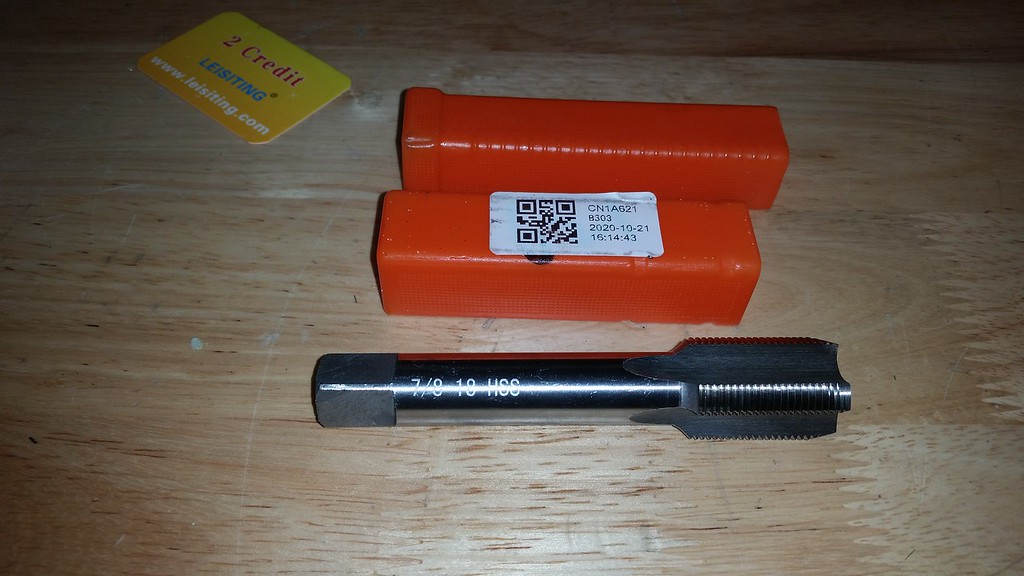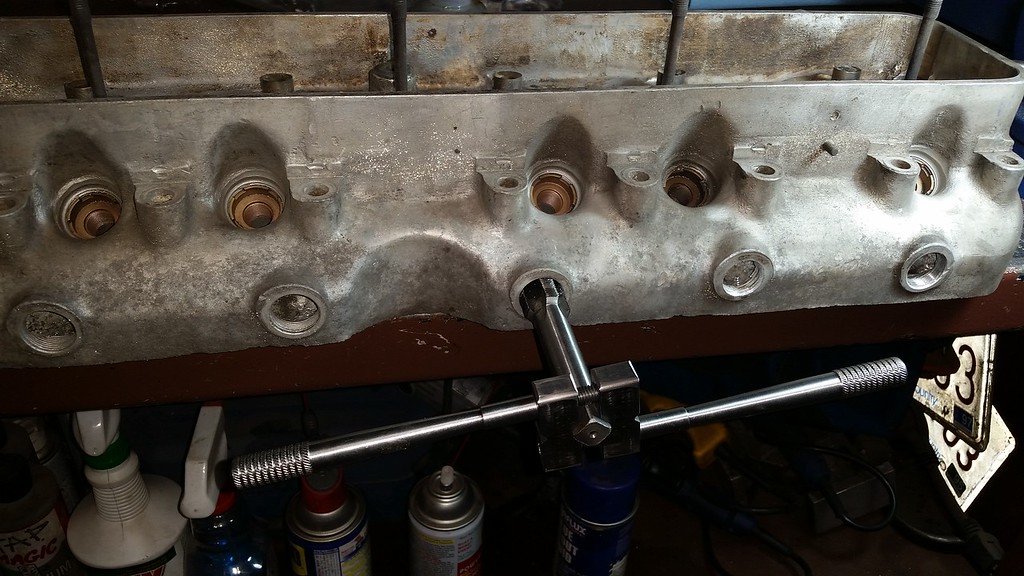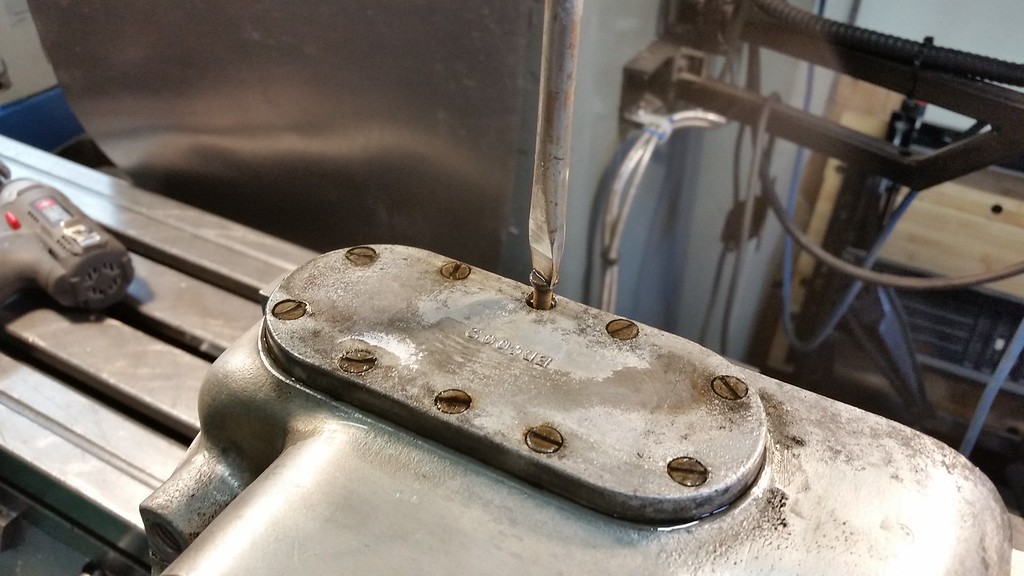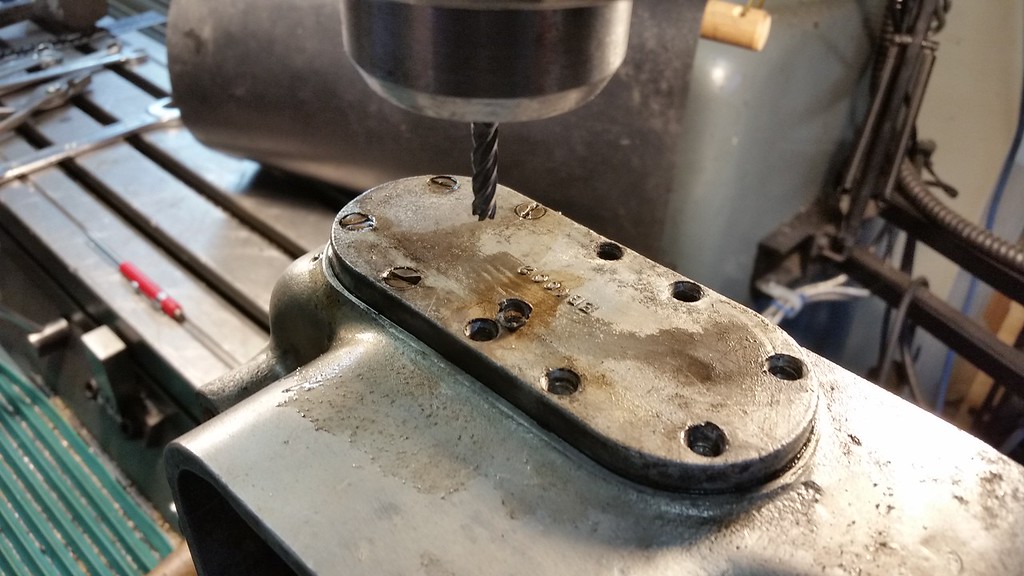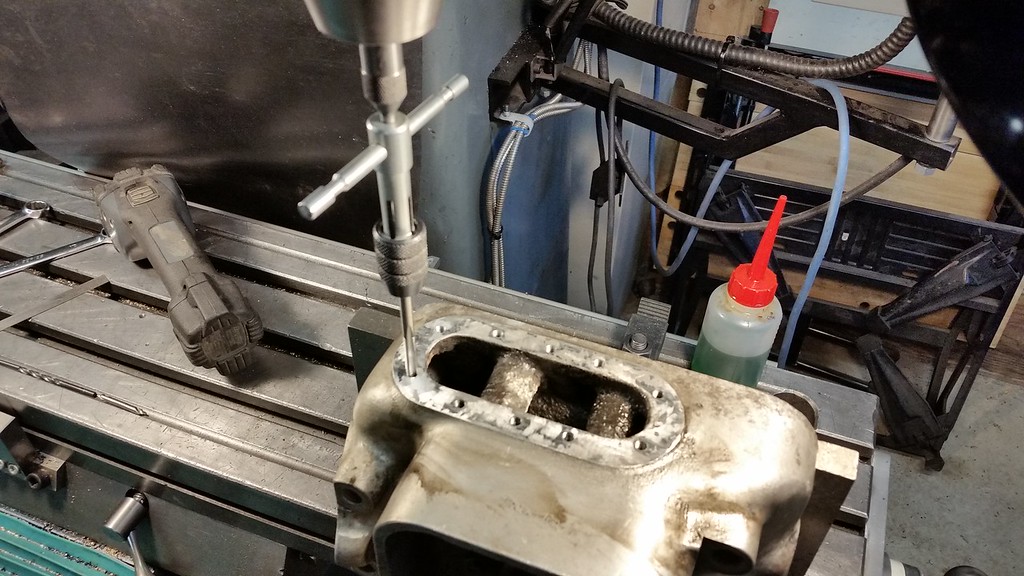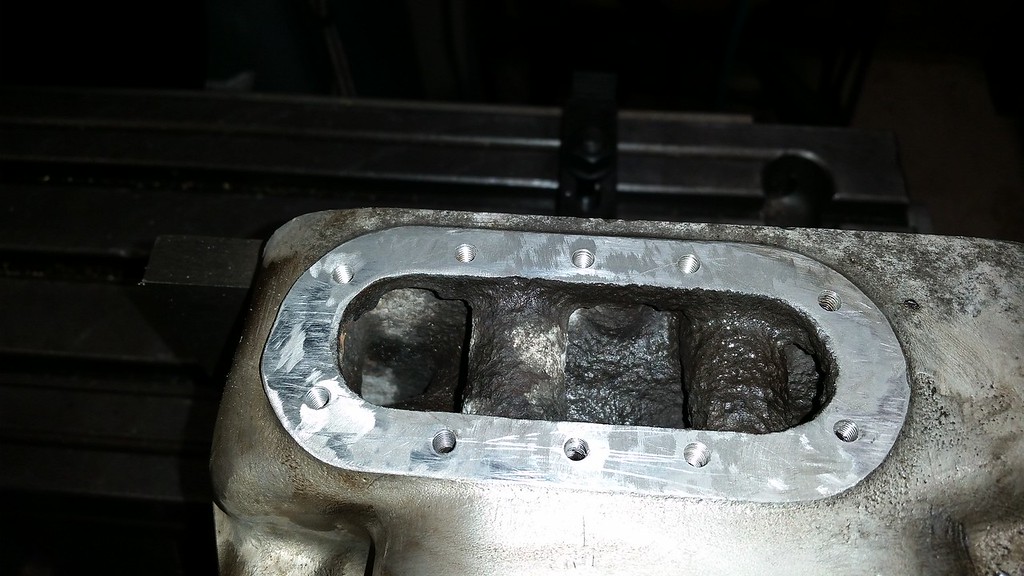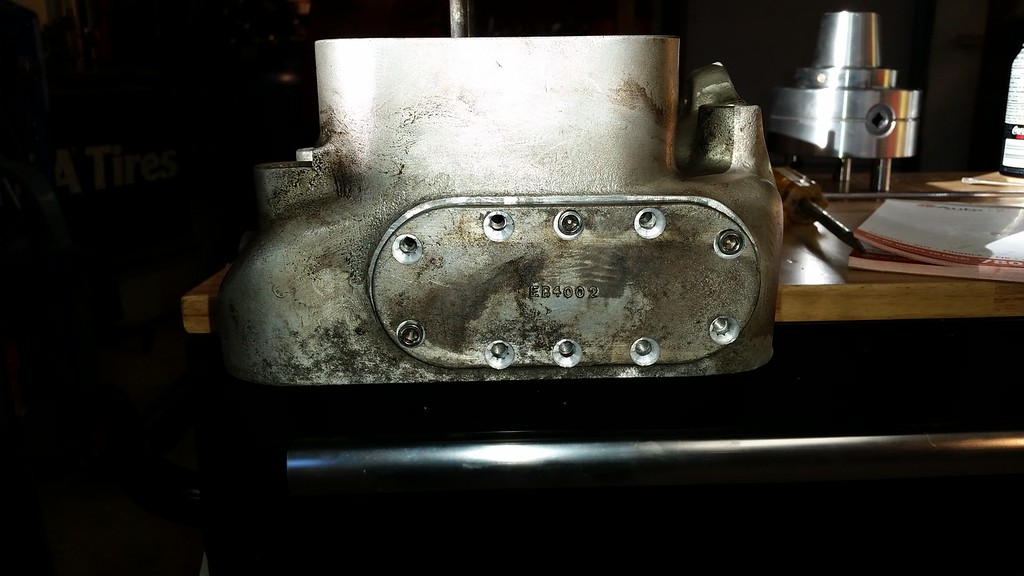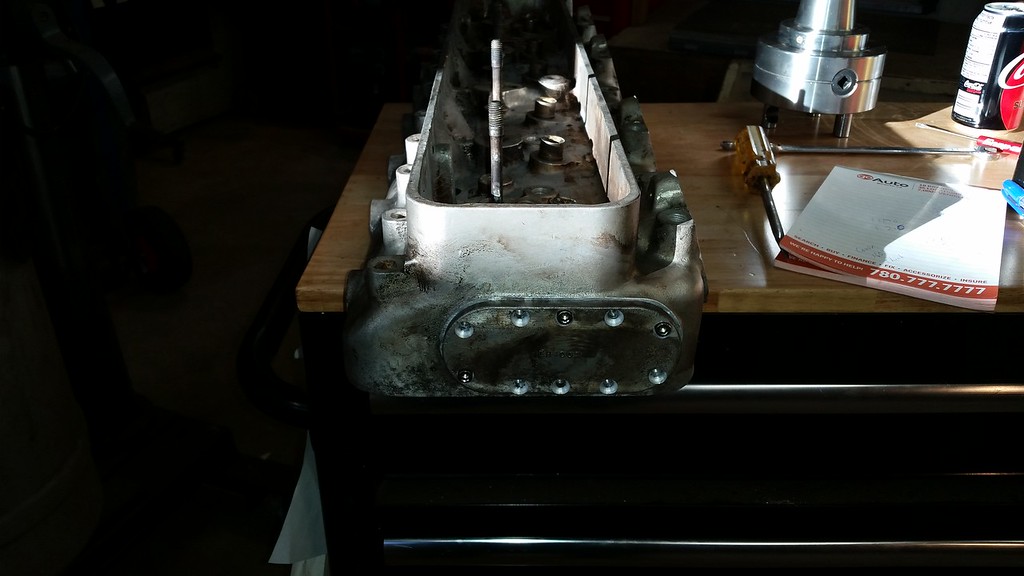Against my better judgement I agreed to help a friend tackle the engine restoration on his 1950 Bentley. The car had sat in an unheated garage for about 25 years before he got it and was seized solid. He wanted to remove the head with the engine still in the car to evaluate the damage. The engine is a strange design with the exhaust valves in the block and the intakes in the head. We disassembled the top end parts down to the head stud nuts, all 39 of them. With all the nuts removed we spent a few hours trying every trick we could think of but could not get the head to move up from the block at all. After some research we discovered that the earlier engines had 5/16" head studs and the stud bores in the head were 3/8" to allow lots of clearance between the studs and the aluminum head. In 1950 the engineers responded to head gasket failure complaints by changing to 3/8" head studs but did not enlarge the stud bores in the head. This left just a few thousandths clearance and even a little corrosion on the studs made for a head that was almost impossible to remove. We read numerous forum posts showing many attempts and failures to get the head off these engine. As we continued to ponder the problem we worked on trying to get the head studs out with a stud extractor. We manged to get 9 out but also broke a few right at the top of the head surface proving that they were indeed seized into the head. I decided to design and build a puller. My plan was to make a 1/2" X 7" plate with a hole pattern matching the head studs. The 9 studs holes that were now vacant measured .390" so I tapped those holes 7/16"nf . The remaining studs were used to push against. In the plate puller I tapped those holes 1/2"nc.I made some pusher studs to thread down though the plate and push against the tops of the exposed studs. Then I made 9 puller studs with 7/16nf thread on one end and 3/8nc thread on the other. With these 9 studs threaded into the head we lowered the plate over them then installed nuts above the plate. We then used a bunch of 1/2" studs with nuts welded to their top to thread down though the plate and push on the remainng stuck head studs. As we were tightening each of the pusher studs a bit at a time we witnessed the plate starting to bend in a few places, remember that is 1/2" steel! We decided to keep going and the head gradually began to move.

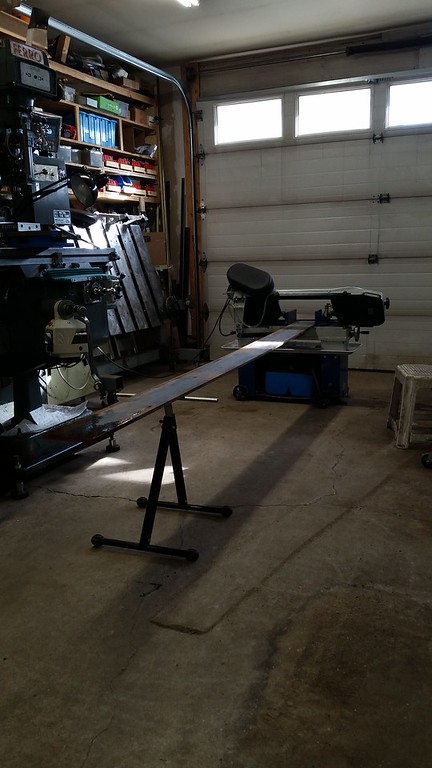
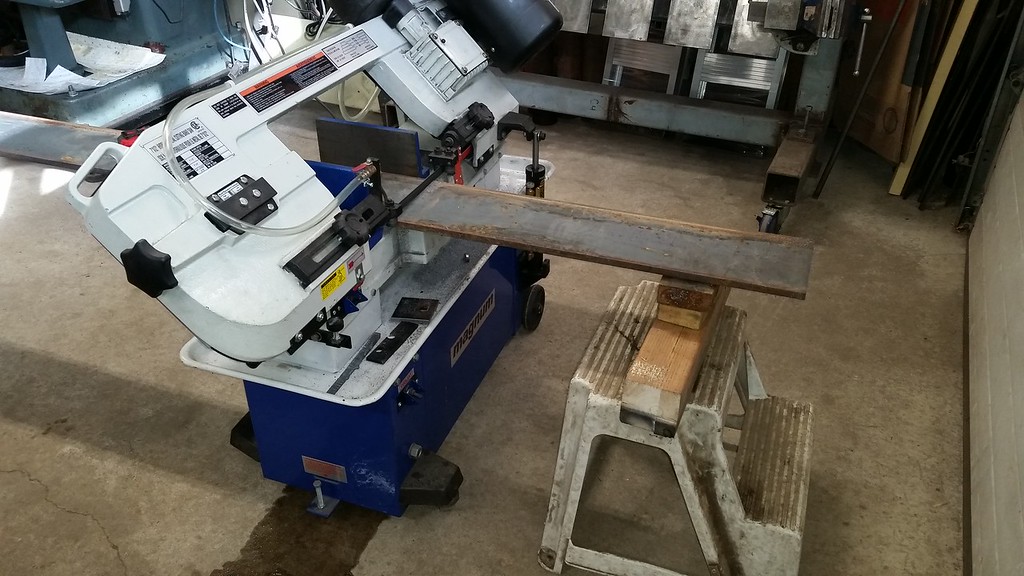



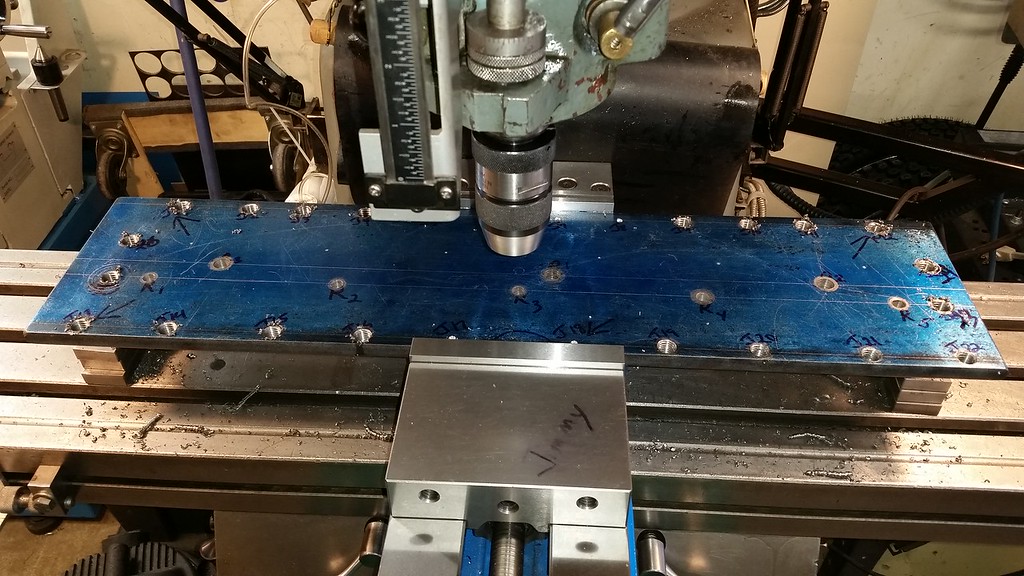
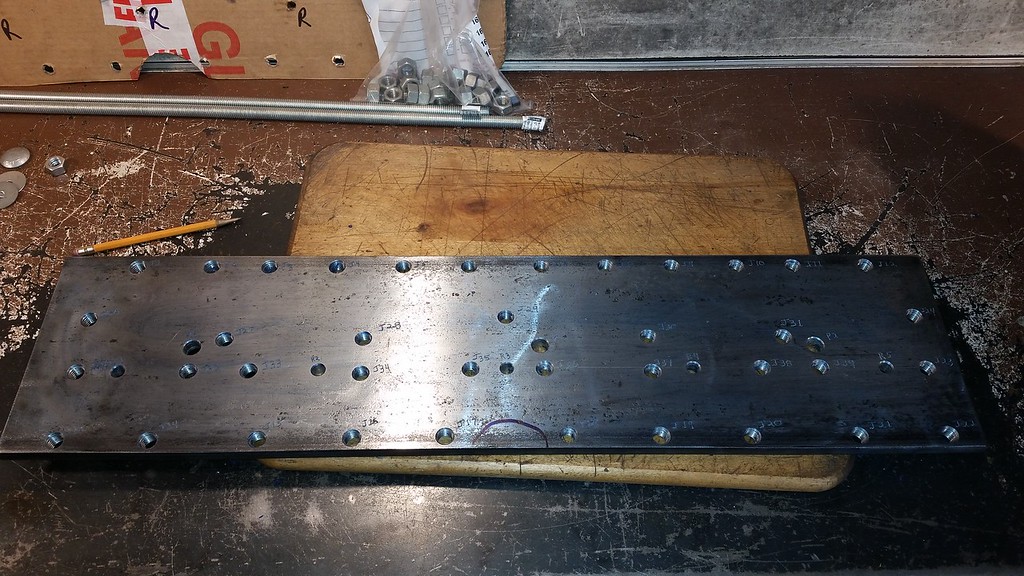
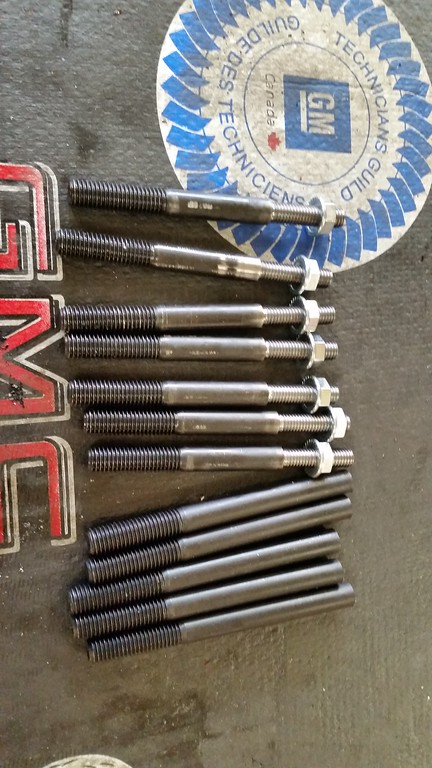
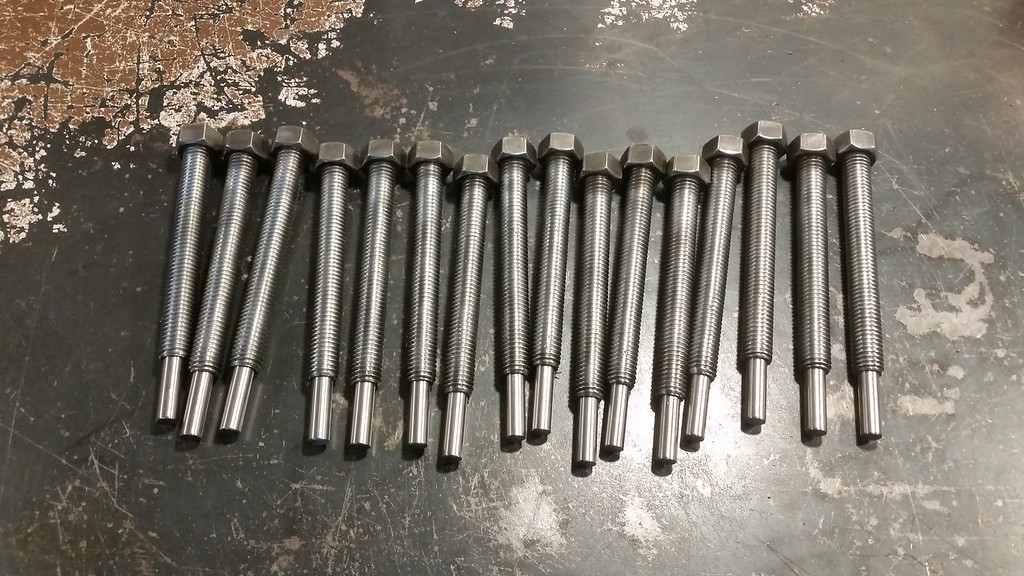
I don't have a picture before the head started to move but when it did we pushed a strap under it and lifted with the engine crane expecting it to lift the head off. No dice, it head to be pushed off about 2 inches before it started to move easily.
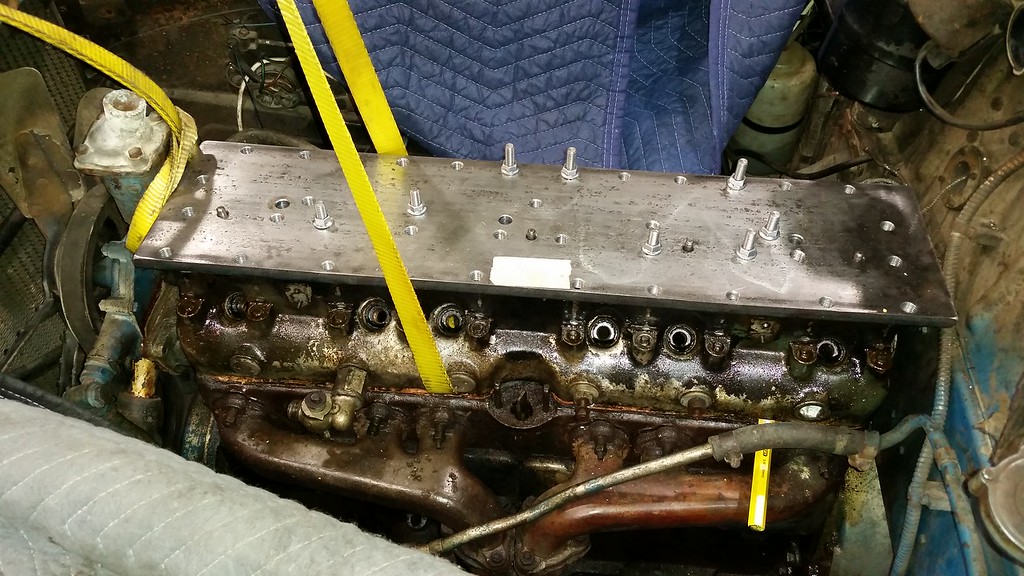
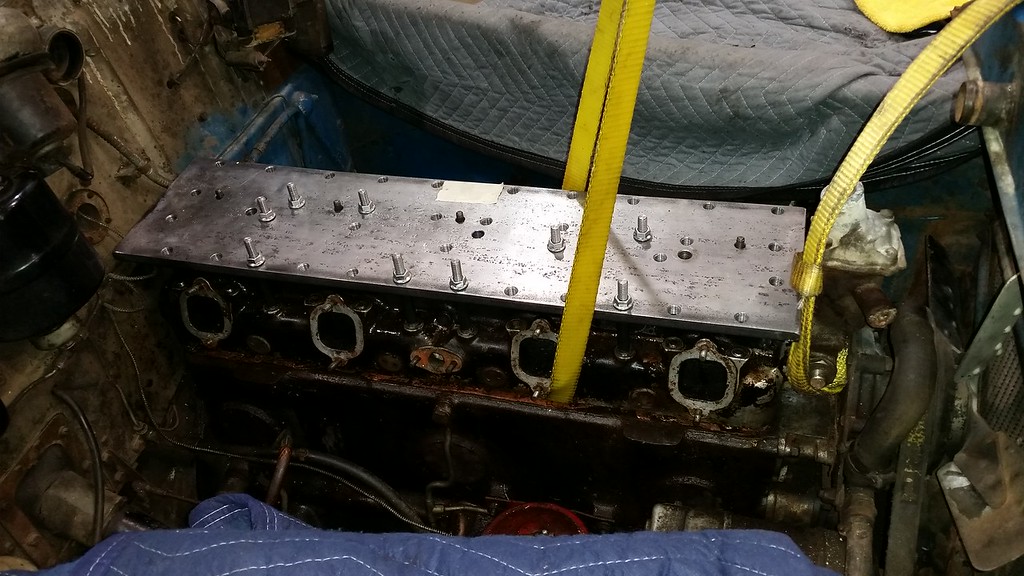
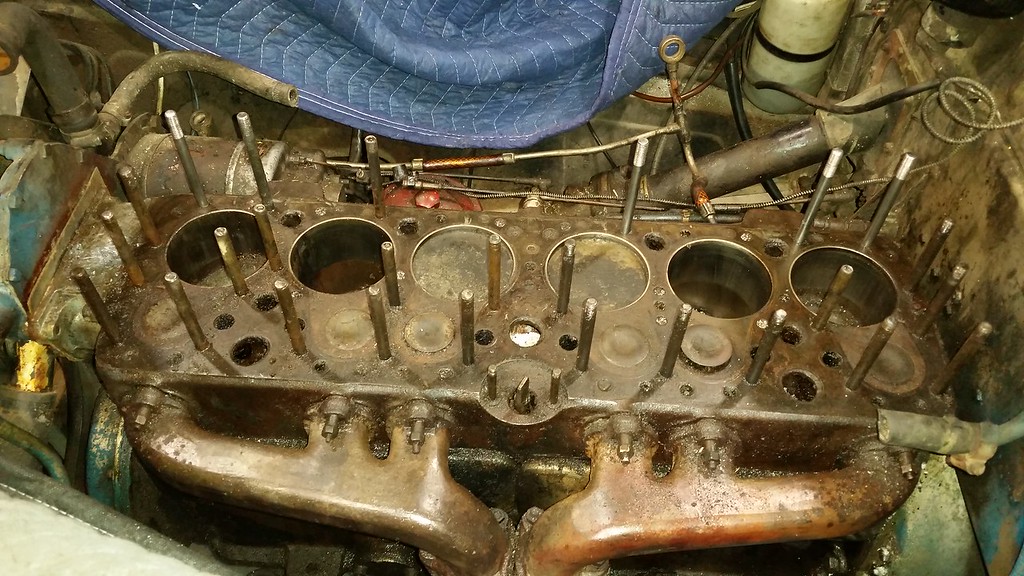
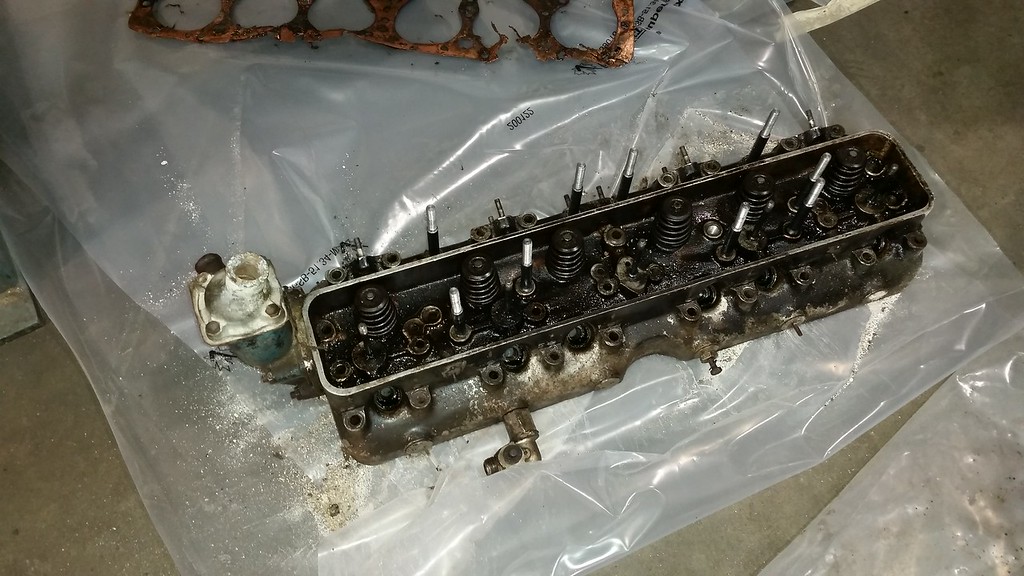
We cracked a few sodas in celebration.










I don't have a picture before the head started to move but when it did we pushed a strap under it and lifted with the engine crane expecting it to lift the head off. No dice, it head to be pushed off about 2 inches before it started to move easily.




We cracked a few sodas in celebration.

